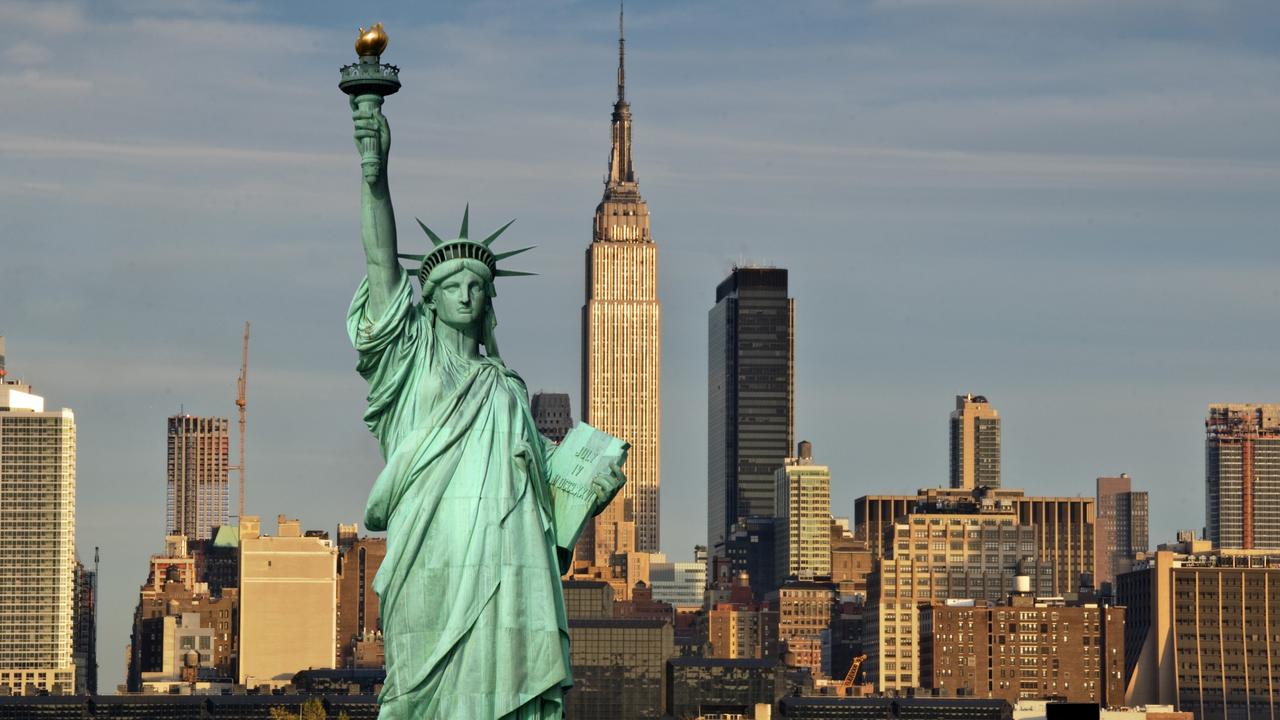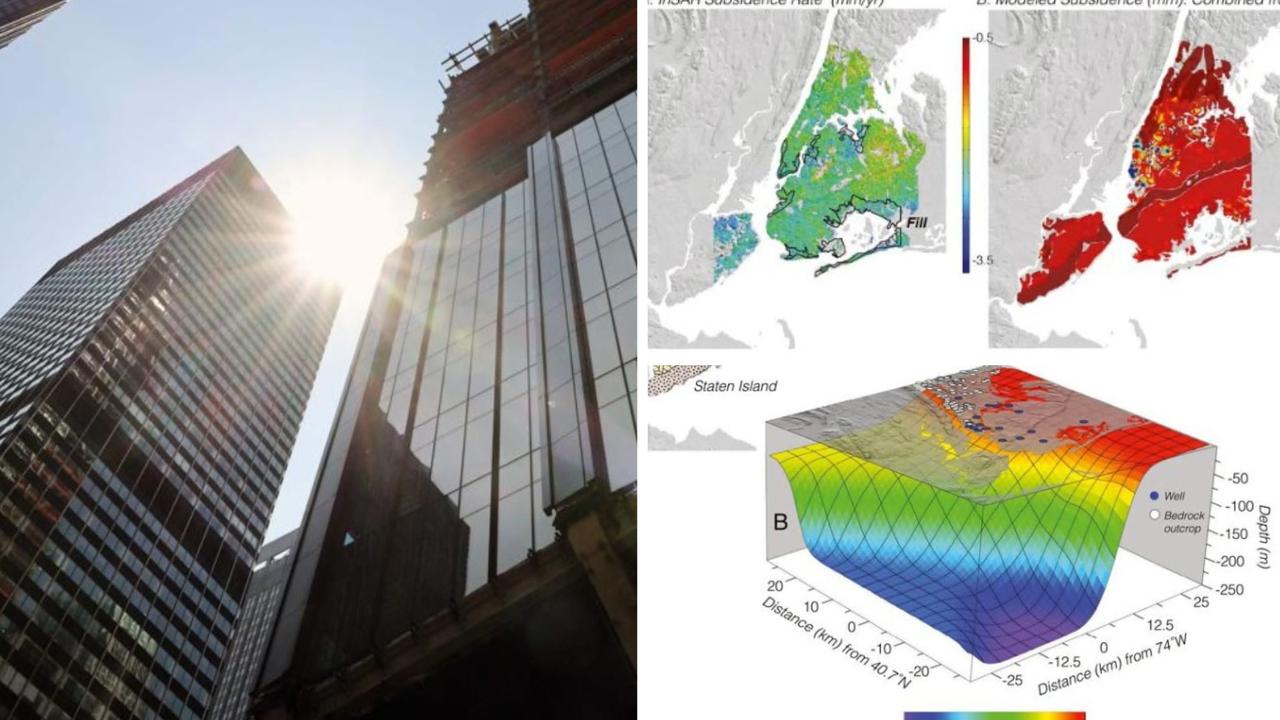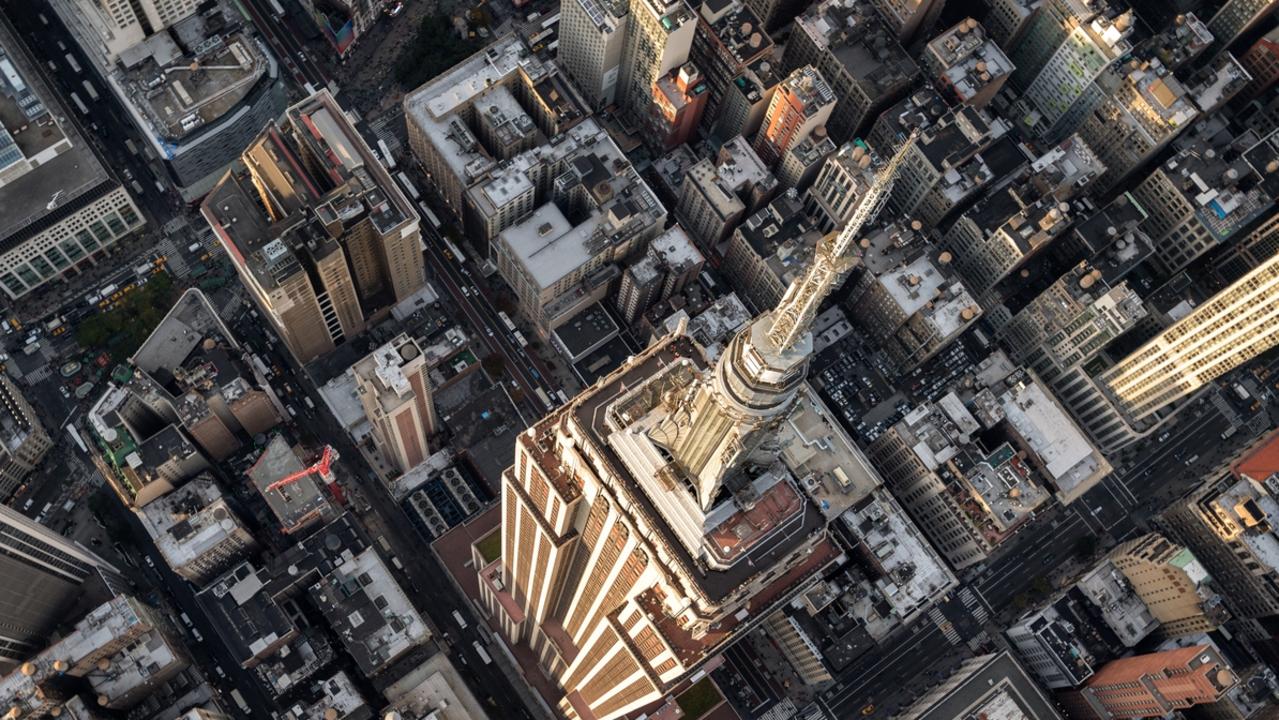New York City is slowly sinking under the weight of its very tall buildings
Eight million people live in New York City in the US. The weight of tall buildings needed to house them all is causing it to sink

READING LEVEL: ORANGE
One of the world’s top tourist destinations — New York City — is sinking under the weight of its tall buildings.
A new study looking at measurements from satellites in space and analysing* layers of the Earth has found the weight of New York’s skyscrapers* is proving too much for the soil beneath them to handle.
Soft layers of ground called sediments are shifting under the massive load, pushing them down and outwards.

The city has one million buildings housing eight million people, which weigh a combined 764 billion kilograms. This load is causing the city to sink at up to 2mm each year.
And while 2mm may not sound like much, parts of the suburb of Lower Manhattan stand just 1m above sea level. At the current rate, king tides* may be rolling seawater down its streets within a few decades.
“Every additional high-rise building constructed* at coastal, river, or lakefront settings could contribute* to future flood risk,” US Geological Survey geologist* Tom Parsons warned.

Mr Parsons and his research team have mapped the city’s weight distribution on a 100-by-100m grid. This doesn’t include the weight of asphalt roads, brick bridges or concrete pavements. This was then overlaid on maps showing the sand, silt*, clay, and bedrock* sitting beneath.
He said the many buildings sitting on clay-rich soils and land “filled in” by man were most at risk.
OTHER CITIES IN DANGER
The researchers said New York was just one example of many coastal cities across the world sinking from a mix of rising sea levels, global warming*, heavy buildings and pumping too much water from below ground to drink or stop flooding.
The World Economic Forum lists the following cities among those at risk of disappearing by the year 2100.
1. Jakarta, Indonesia: sinking up to 17cm each year. The government plans to move the capital from the island of Java to Borneo to protect its 10 million residents from more flooding. The move would take about 10 years and cost $33 billion (see Extra Reading).

2. Lagos, Nigeria: Lagos’ low coastline continues to disappear, and rising seas caused by global warming put Africa’s largest city in danger of flooding.
3. Dhaka, Bangladesh: Oceans could flood 17 per cent of Bangladesh’s land and force about 18 million of its citizens to flee by 2050.
4. Venice, Italy: Italy has been building a $6.5 billion flood barrier known as Mose for 20 years. It will be fully working to stop flooding in 2025. The city is sinking by 2cm each year.

5. Bangkok, Thailand: It is sinking 1cm a year and could be below sea level by 2030. A huge 11-acre park that can hold 3.7 million litres of rainwater has been built to help stop flooding.
6. New Orleans, US: Some parts of the city are 4.5m below sea level, and its location where a river meets the sea increases its risk to rising sea-levels and flooding.
7. Rotterdam, The Netherlands: 90 per cent of Rotterdam is below sea level. The Dutch have built water parks that double as reservoirs* to capture floodwaters and barriers to stop storm swells.
8. Alexandria, Egypt: The city’s beaches are disappearing as the Mediterranean Ocean continues to rise.
GLOSSARY
- analysing: to study closely
- skyscrapers: very tall buildings
- king tides: extremely high rises in ocean water levels
- constructed: built
- contribute: add
- geologist: a scientist that studies the surface of the Earth and what it is made of
- silt: solid, dust-like material moved by water, ice and wind
- bedrock: hard, solid rock beneath the ground
- global warming: a process that causes the earth to become hotter, mostly caused by humans
- reservoirs: man-make lakes
EXTRA READING
Indonesia to relocate capital city from Jakarta
How rising sea levels could impact the Opera House
Two-thirds of glaciers set to disappear by 2100
QUICK QUIZ
1. What is shifting under the ground causing New York to sink?
2. How much do New York’s buildings and residents weigh?
3. How much is the city sinking each year?
4. Name three reasons why some world cities are sinking.
5. Where does Indonesian want to move its capital Jakarta from and to?
LISTEN TO THIS STORY
CLASSROOM ACTIVITIES
1. New York sinking
When you think of the city of New York sinking at a rate of 2mm per year, when it is only 1m above sea level, it won’t take long for it to be flooding or underwater, which is not great for a city of eight million people.
If you were employed to come up with a plan to either stop, slow or redirect what is happening, write down three ideas as to how you might do this:
1.
2.
3.
Time: allow 25 minutes to complete this activity
Curriculum Links: English; Geography; Design and Technologies; Personal and Social; Critical and Creative Thinking
2. Extension
Out of the other eight cities listed as being in danger, which one do you think could be the most dangerous or biggest threat to human life? Explain your reasons.
Time: allow 15 minutes to complete this activity
Curriculum Links: English; Science; Personal and Social, Critical and Creative Thinking
VCOP ACTIVITY
1. New York or the New Atlantis
Atlantis is a legendary island that was sunk beneath the ocean by the gods to punish its people for their immorality. Is New York next to be punished by Mother Nature for its overdevelopment greed?
Write a letter from Mother Nature to the people of New York.
You can either write it as a plea to stop the developments, explaining that the weight of all the development is too much of a strain for you.
Or you can write it out of anger for the greed of building more and more and more.
Can you convince the people of New York to care enough to stop constructing more buildings before the island city sinks like the fictional Atlantis?


